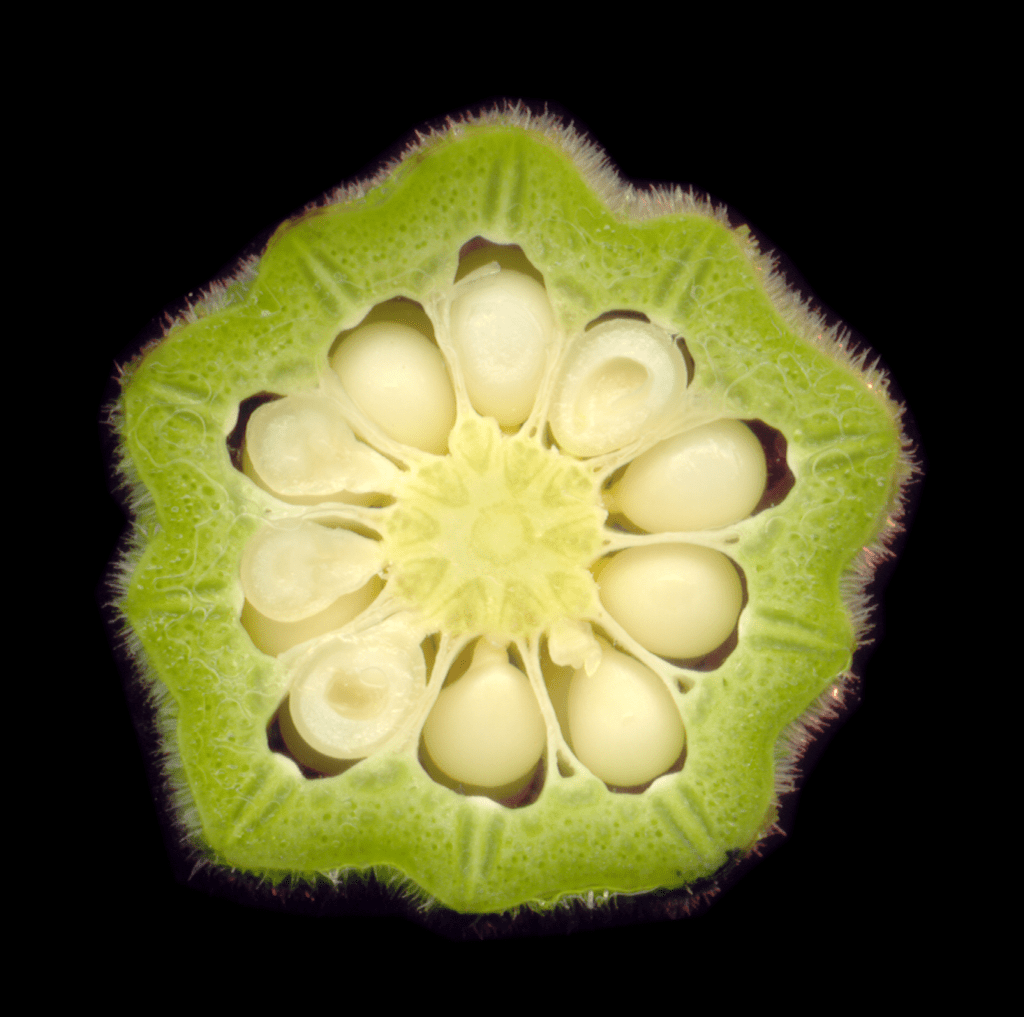
La ocher It is a tropical plant native to Africa that little by little is gaining a niche in our garden, and also in our patio because although it can reach 2 meters in height, its roots are not invasive so they can be in pots throughout the season. .
So now you know, if you want to try different flavors, learn more interesting things about okra 🙂.
Characteristics of the ocra
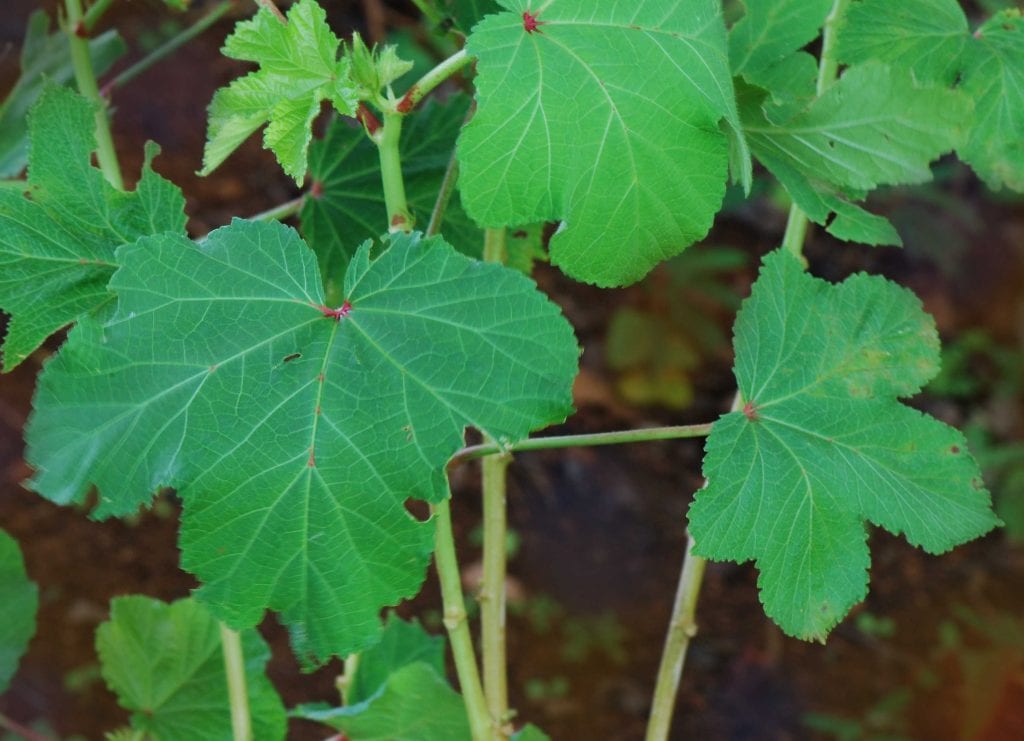
The okra, also known by the common names bamia, okra, okra, gombo, abelmosco, molondrón or okra, and with the scientist Abelmoschus esculentus, it is an annual plant that can behave as a perennial if the climate is mild and warm throughout the year. It grows to a height of 2m, and can reach 3m in tropical areas. The central stem is robust, and produces branches with palmate leaves that are dark green on the upper side and light green on the underside.
The flowers are very pretty, solitary, with a short petiole, yellowish-white in color and with a diameter of up to 4cm. Once they are pollinated, the fruit begins to mature, which will become a capsule with a conical shape 30cm long and up to 3,5cm in diameter. Inside you will find the seeds, which once mature measure 3mm in diameter and are dark gray in color.
Varieties
A total of 4 varieties are distinguished, which are:
- Red velvet: of red fruits.
- Blondy: with ribbed fruits of light green color.
- Clemson spineless: plant without stinging hairs. The fruits are angular and dark green.
- Lee: it has no thorns, and the fruits are yellowish green.
How is it grown?
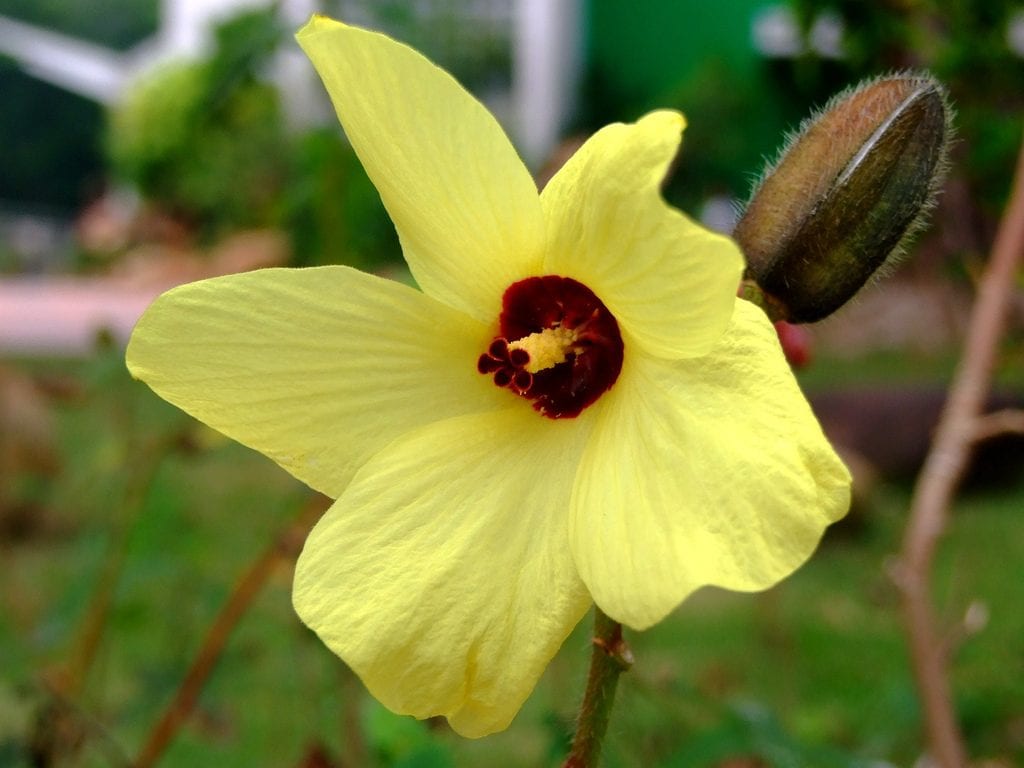
If you dare to try the flavor of the fruit of this plant, follow our advice to obtain an excellent harvest:
Siembra
The seeds must be purchased in spring, as soon as the risk of frost has passed. Once you have them at home, put them in a glass of water for 24 hours to be able to discard those that are not viable, which will be the ones that remain floating.
The next day, it will be time to sow them in seedbed. As such you can use flowerpots, seedling trays, peat tablets, milk containers, glasses of yogurt, ... in short, whatever you have more at hand. Of course, make sure that it has (or that you can make) holes for water drainage.
As soon as you've decided what to use as a hotbed, fill it with universal growing medium, and place the seeds so that they are about 2cm apart from each other. If you use peat pellets, plant only one seed in each so they can germinate better. Expose your seedbed to direct sunlight, and keep the substrate moist by spraying it with water regularly.
Transplant
The seedlings will grow very quickly, so that in just one month after sowing you will have to move them to larger pots or to the garden. Let's see how to proceed in each case:
Transplant to a larger pot
- The first thing you have to do is extract the seedling from the socket or container.
- Now fill a 30cm diameter pot about half full with universal growing medium mixed with 30% perlite.
- Then, place the seedling in the center, and finish filling the pot.
- Finally, water and put it in a place where there is a lot of light, but not direct until you see it growing. When that happens, move it to a place where the sun shines directly.
Planting in the garden
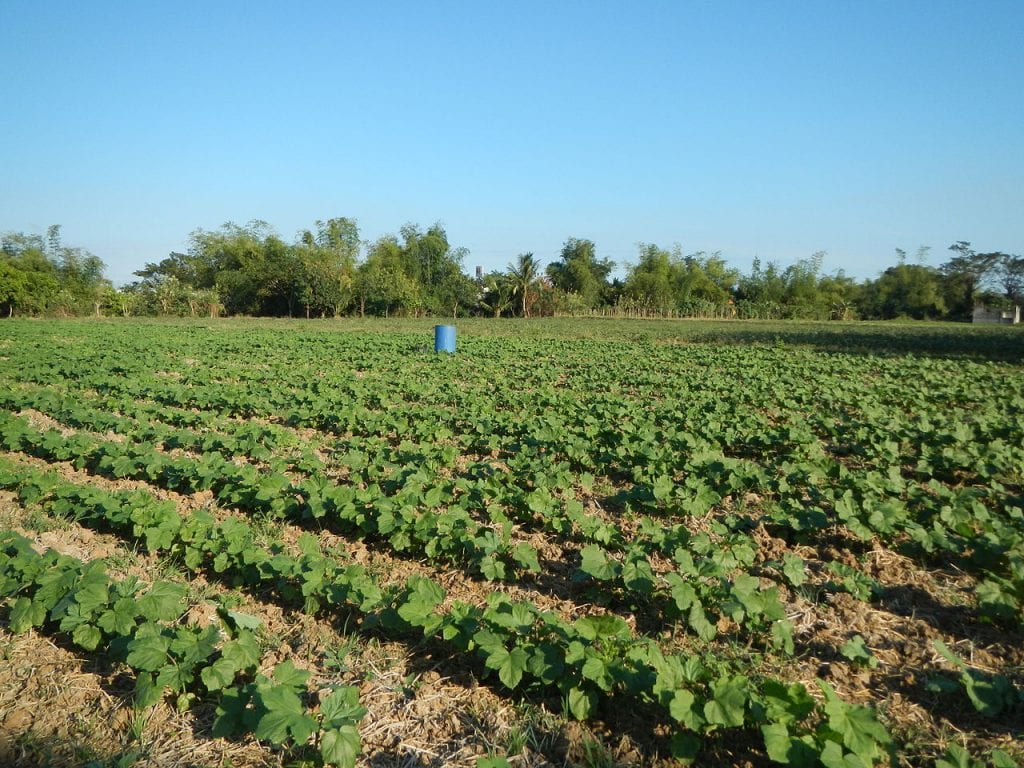
- The first thing you have to do is prepare the ground: remove the wild herbs and stones, put a 5cm layer of organic compost (chicken manure highly recommended, for its quick effectiveness), and rake well so that it is level.
- Now, it's time to make the grooves, leaving a distance of 30cm between them.
- Then plant the okra in rows, 20cm apart.
- Finally, give them a generous watering.
Subscriber
Throughout the season it is very important that you fertilize it from time to time using organic fertilizers, either liquid if you have it in a pot, or powder if it is in the garden. In the first case, you must follow the instructions specified on the product; in the second, it will be enough to put a 2-3cm layer around the plant once every 15-20 days.
Harvest
Harvesting the fruits it is done when they are not yet fully ripe, since otherwise they could not be eaten as they become fibrous and hard. A trick to know the exact moment is to pick them 6 to 10 days after the flower has opened.
Always wear gloves, long sleeves and long pants since the entire plant is protected with small stinging hairs.
Plagues and diseases
Pests

- Aphids: they are tiny insects that settle on flowers and in the areas close to them. Are fought with Neem oil.
- White fly: the nymphs of these insects feed on the sap, weakening it. Are fought with potassium soap, and also with Neem Oil.
- Nematodes: they feed on the roots, which causes them to rot. To avoid this, the soil must be treated with diatomaceous earth, which is an ecological insecticide that has a fast effectiveness.
Management
It can be affected by Yellow vein mosaic virus, which is transmitted by, as its name suggests, a virus that causes the appearance of yellow veins on the leaves.
Unfortunately, there is no treatment. Only the affected parts can be removed.
Rusticity
Okra grows well in hot climates with cool nights and hot days. The maximum temperature must be between 25 and 35ºC. It does not resist frost.
Uses
The okra it is used as a plant for edible fruits. It is a vegetable that combines well with tomatoes, onions or even with peppers. It can be used to prepare delicious tomato sauces, as in Grecia, or, if you prefer, a coffee substitute as they do in Nicoya (Costa Rica).
Its nutritional composition per 100 grams is as follows:
- Calories: 31kcal.
- Proteins: 2 grams
- Carbohydrates: 7,03 grams, of which 3,2g are fiber and 1,2g sugar
- Grease: 0,1 gram, of which 0,026g are saturated fat, 0,027g are polyunsaturated fat, and 0,027g are monounsaturated fat.
- Cholesterol: 0mg
- Sodium: 8mg
- Potassium: 303mg
Medicinal properties of okra
Our protagonist being rich in fiber is excellent for treating constipation. Also stimulates intestinal transit and is antidiabetic. As if that were not enough, it helps reduce bad cholesterol (LDL cholesterol) and purify the body.
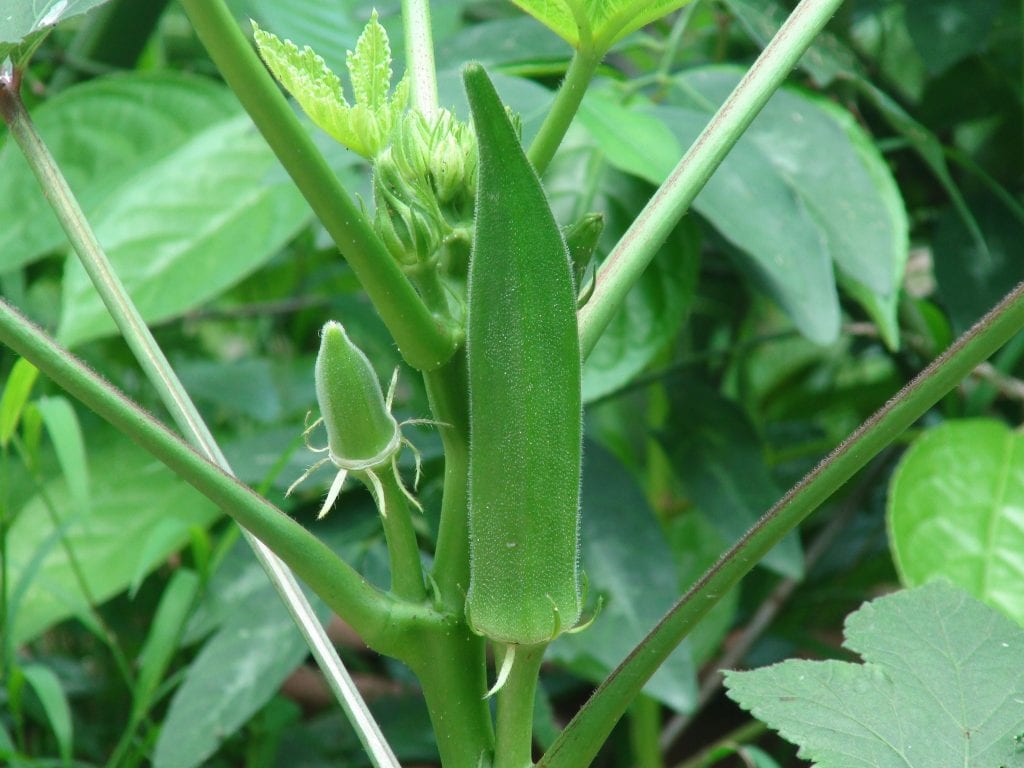
What did you think of this plant? 🙂